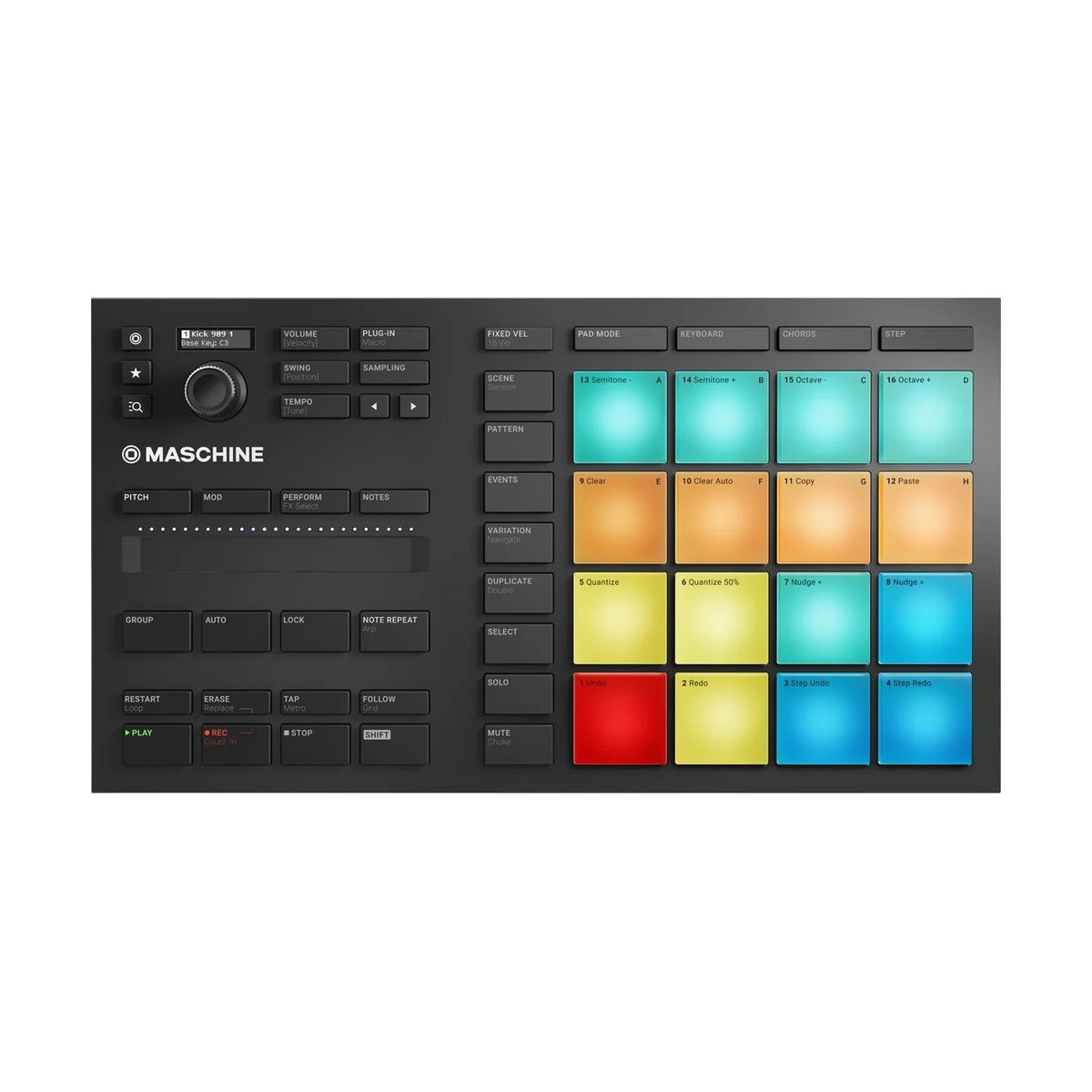
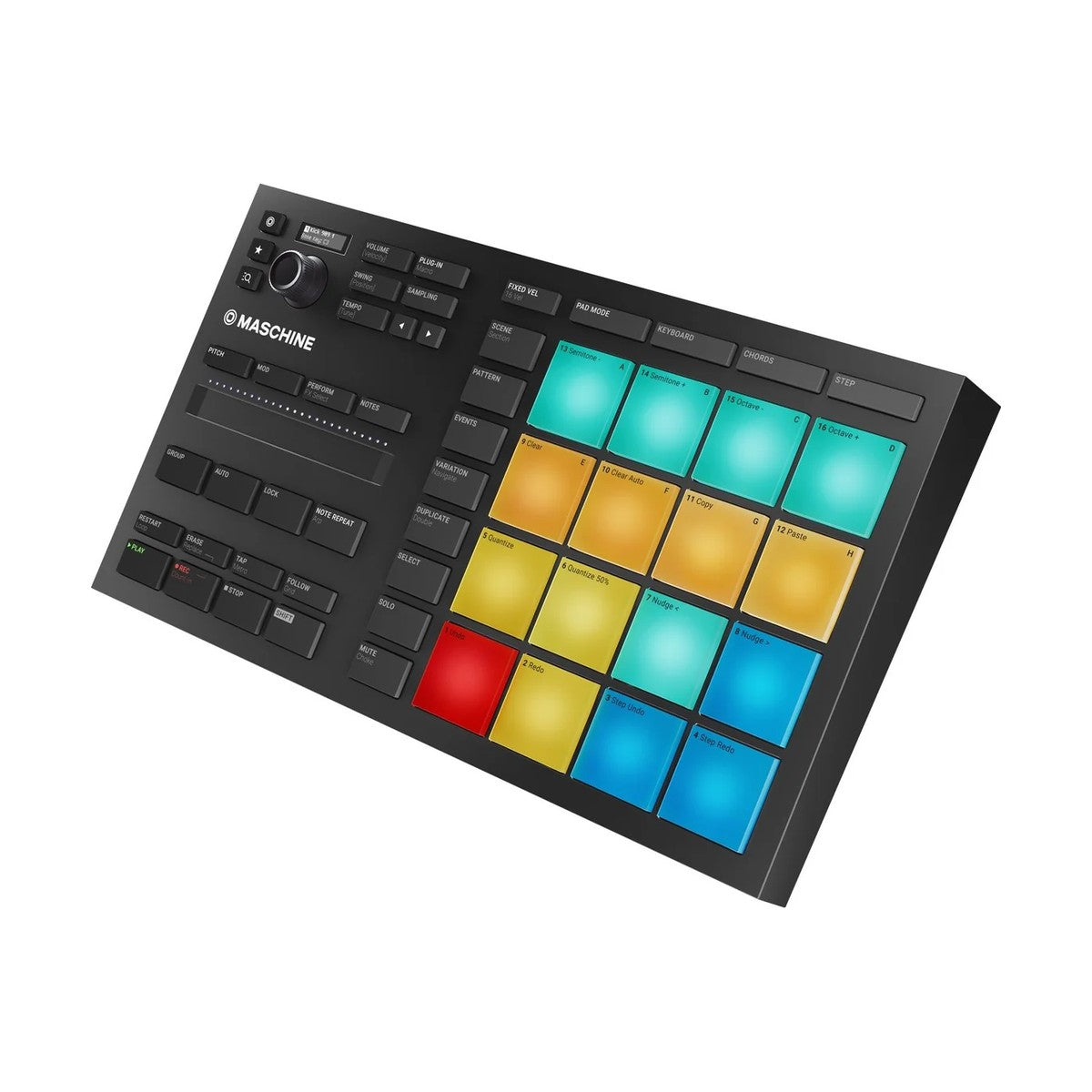
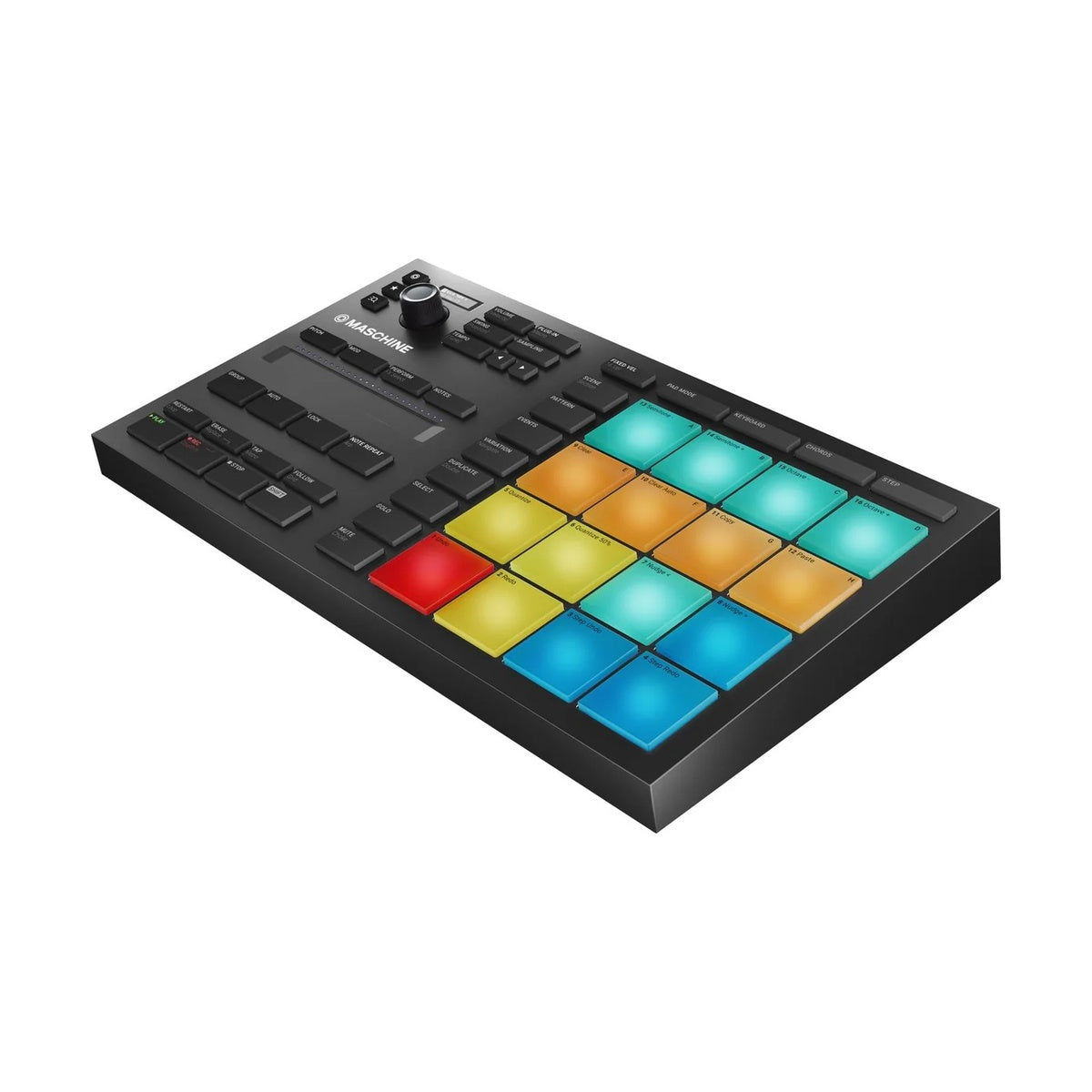
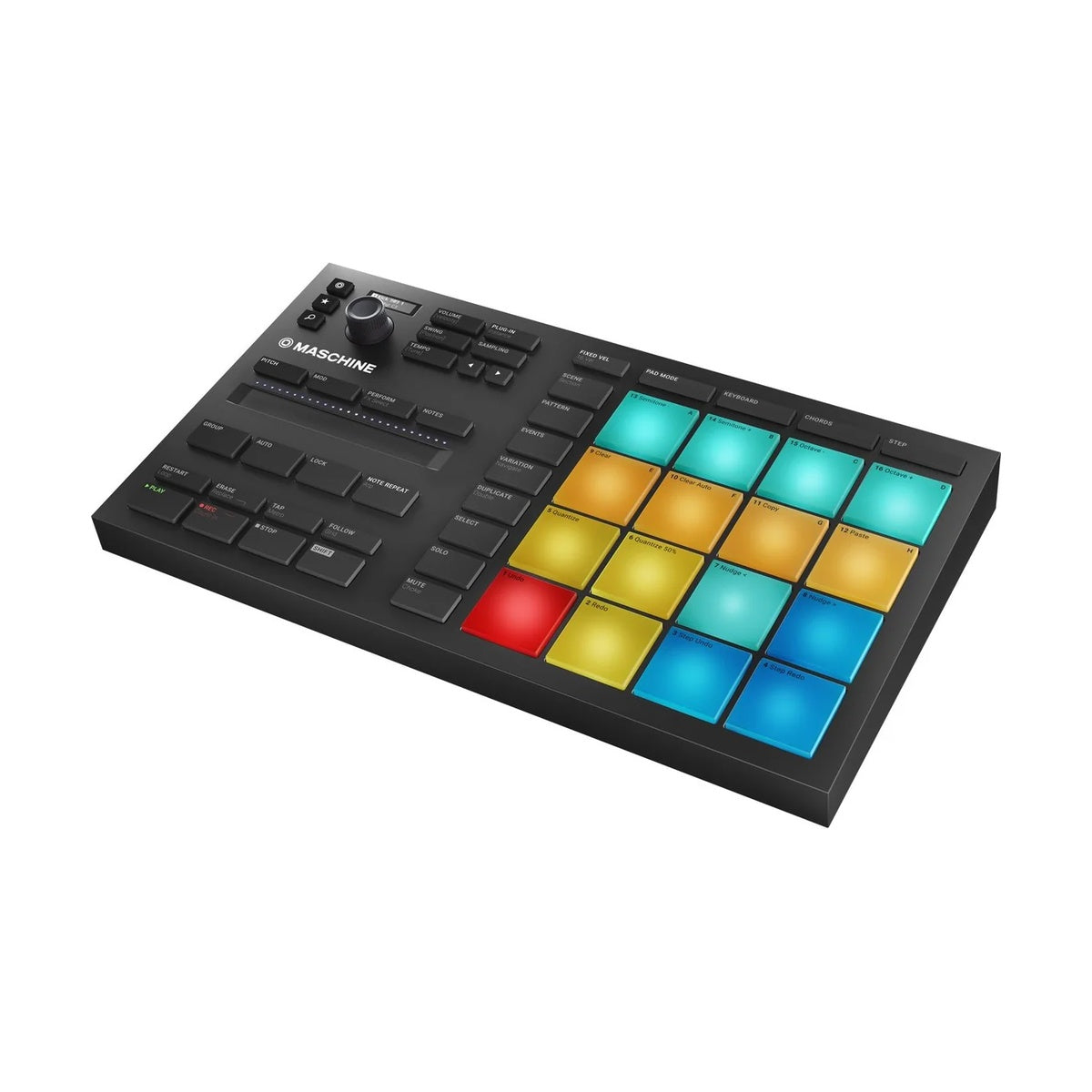
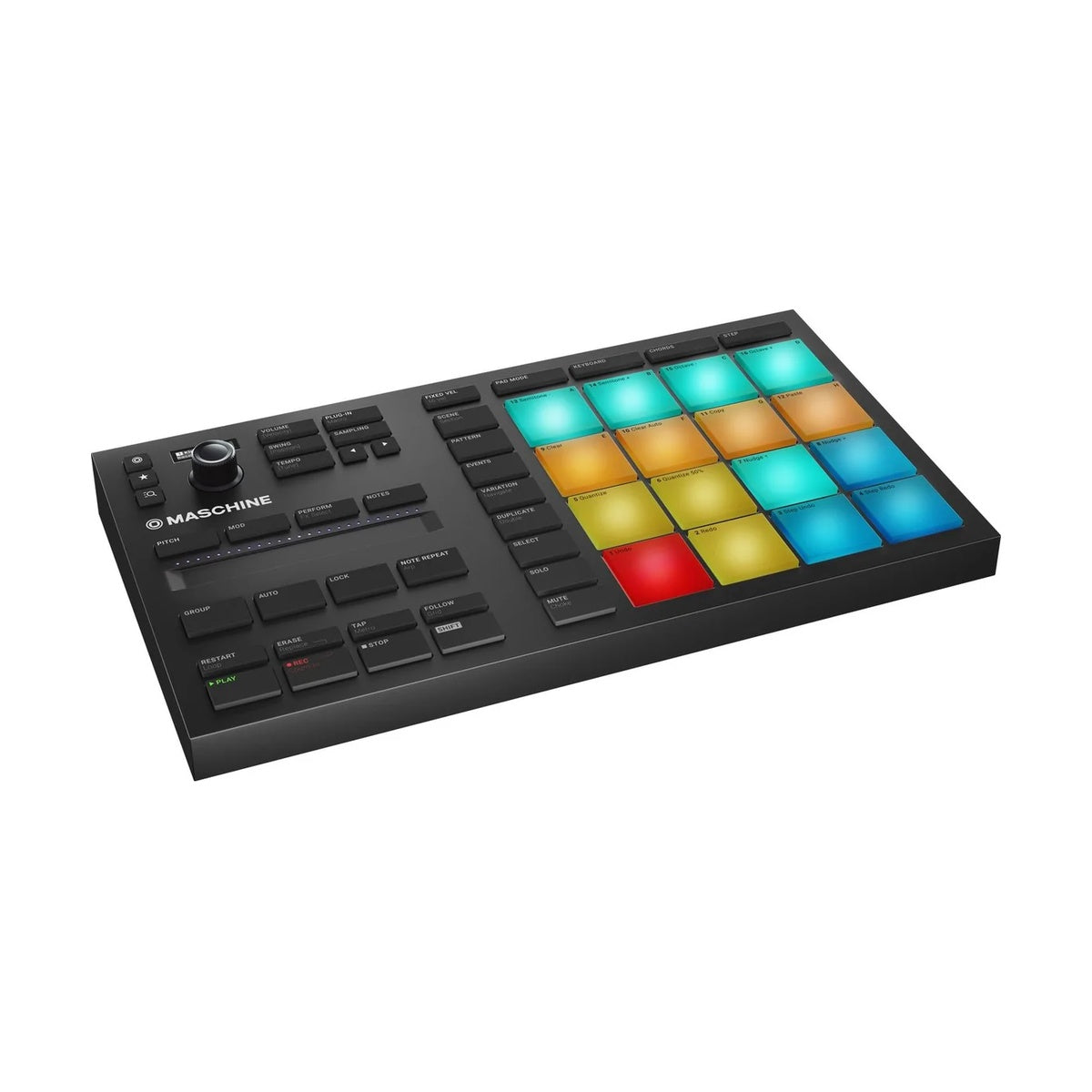
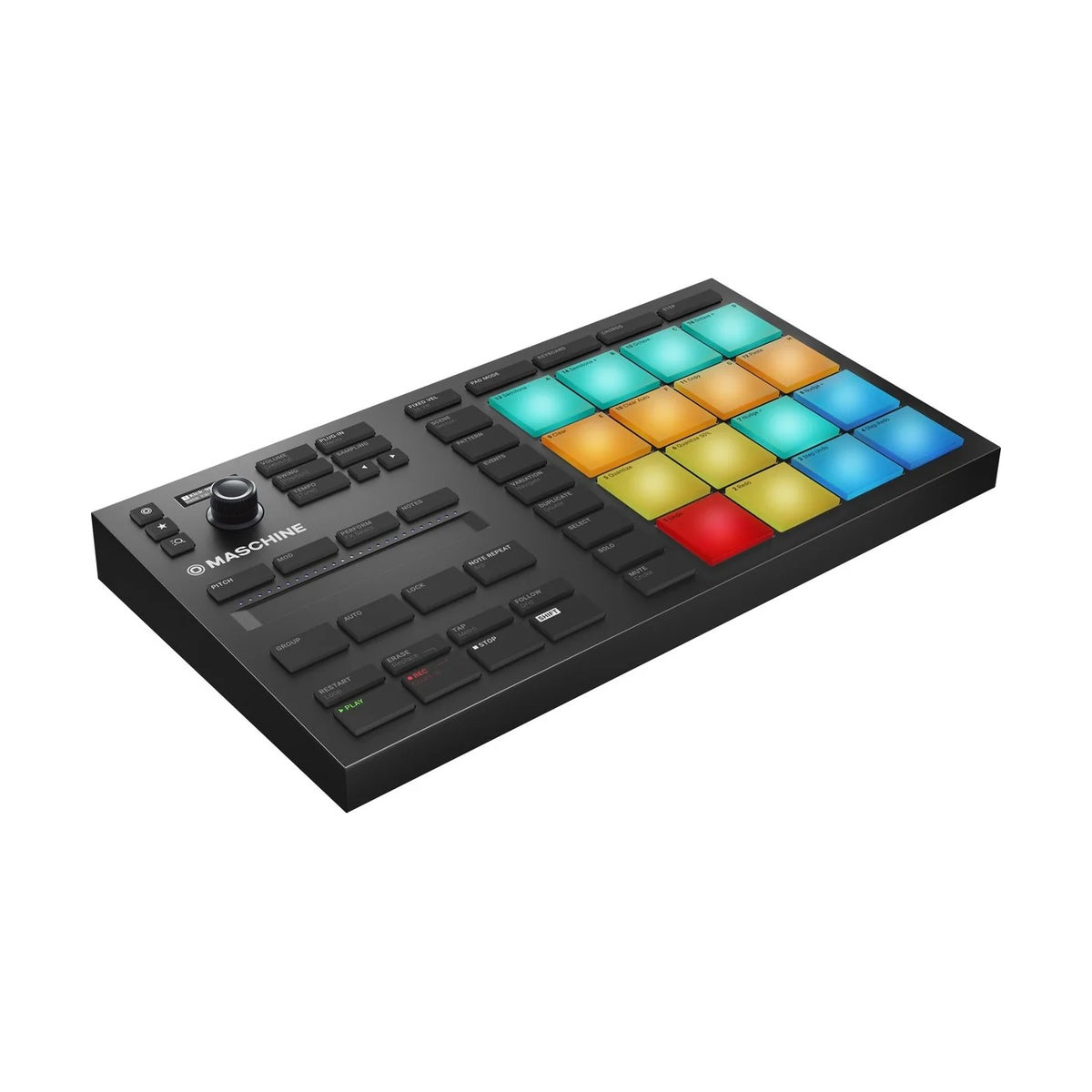
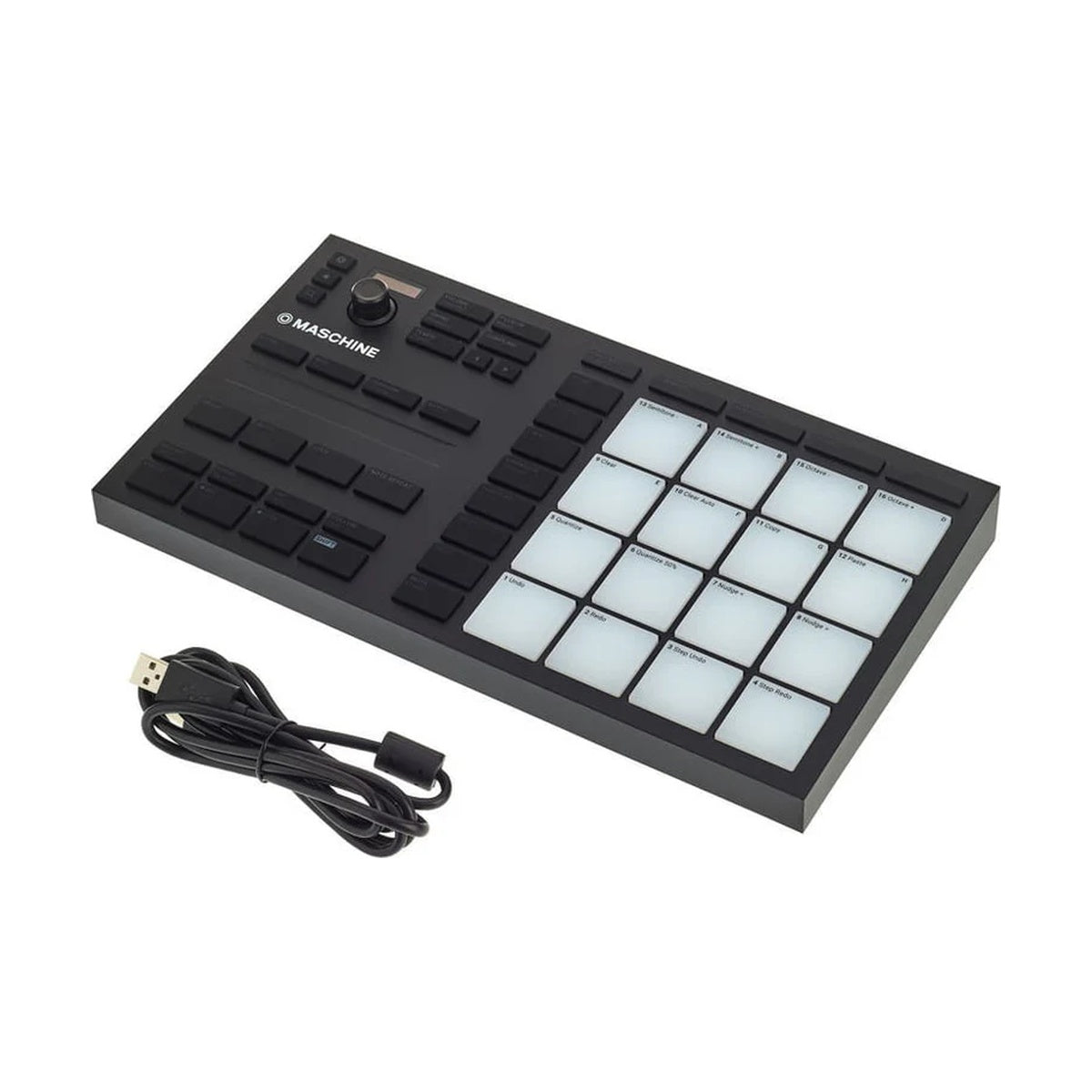
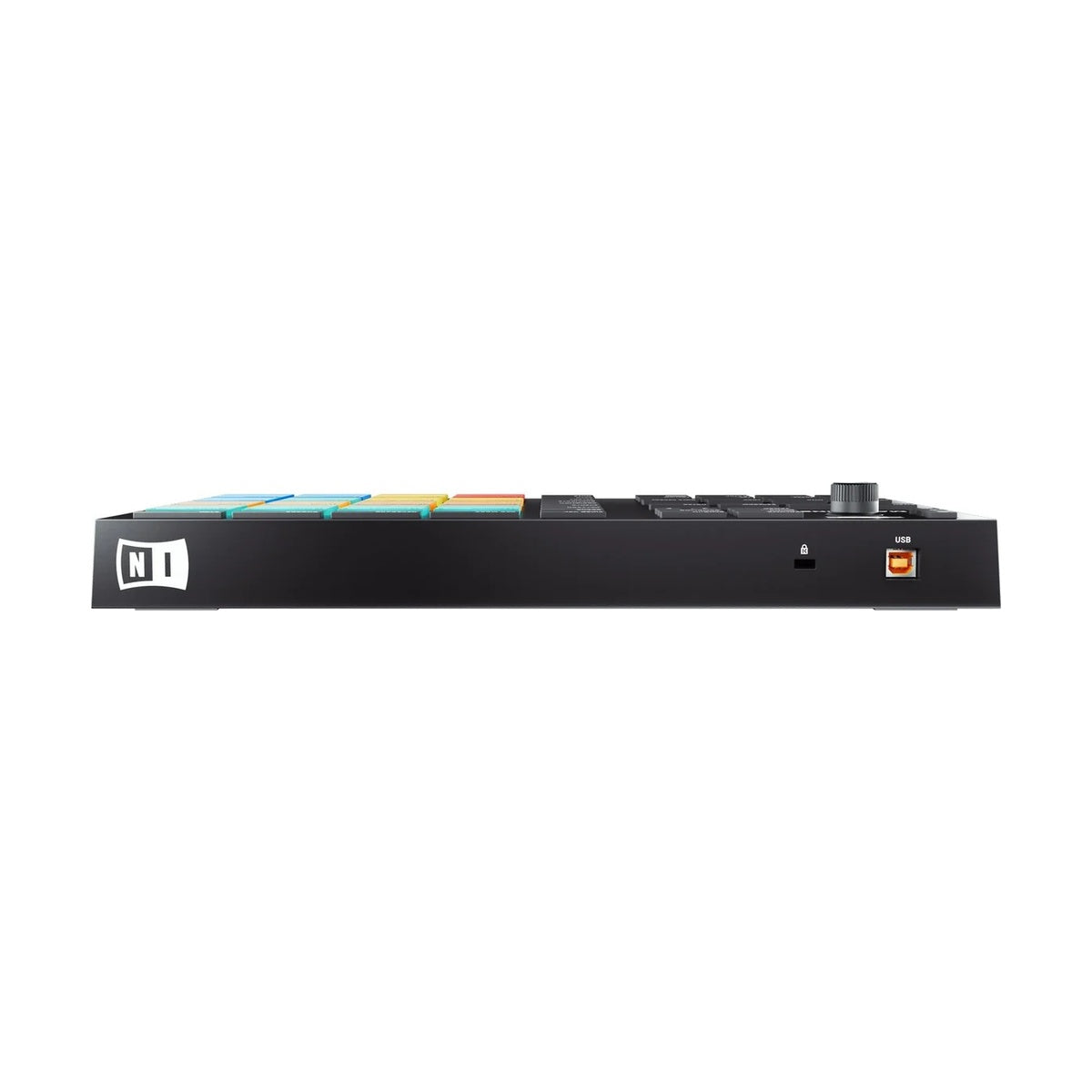
Native Instruments
Native Instruments Machine Mikro MK3
This item is available on a custom order basis only. Please contact us for more details. Contact us
Choose options
This item is available on a custom order basis only. Please contact us for more details. Contact us
This item is available on a custom order basis only. Please contact us for more details. Contact us
Native Instruments Maschine Mikro MK3 – a compact production system combining hardware controller with powerful Maschine 3 software, offering 16 large velocity-sensitive RGB pads with backlighting, dual-touch Smart Strip, push encoder with compact display, and dedicated navigation and transport buttons. The system provides complete control over music creation in four modes (Pad, Keyboard, Chord, Step Sequencer), operates standalone or as a VST/AU/AAX plug-in in all major DAWs, and ships with the 1.6 GB Maschine Essentials library plus three KOMPLETE instruments: Massive, Monark, and Reaktor Prism.
Maschine Mikro MK3 is the most portable version of the legendary Maschine system, optimized for laptop work and designed for fast workflow without compromising functionality. New, larger pads inspired by the popular Maschine MK3 provide more room for complex techniques like flams and rolls, while increased sensitivity to lighter touches enables expressive playing. The center-to-center distance remains identical, so muscle memory and workflow don't need to change. Color-coding allows assigning 7 colors to specific instruments for instant recognition of groups, sounds, and patterns.
The dual-touch Smart Strip opens new playing possibilities – it allows strumming instruments, bending sounds, and creative use of Perform FX by sliding fingers. The push encoder with compact screen guides the user through multi-function features, showing exactly what's being controlled. Dedicated buttons provide quick access to most-used functions: sampling, swing, tune/pitch, volume, browsing without stopping the music. The simple, clear browser allows quickly changing instruments, presets, and sounds – showing only what's needed. Four sound input modes via 16 pads: Pad mode (drumming), Keyboard mode (melodies), Chord mode (chord progressions), Step mode (classic step sequencer).
Maschine 3 software includes everything needed to create and perform tracks – from the 7 GB Maschine Central library with presets from cult synthesizers Massive, Monark, Prism, over 700 drums, and 144 multi-sampled Kontakt instruments, to 25 professional studio and creative effects (filters, EQ, delay, reverb, compressors). Exclusive Drum Synths (5 plug-ins) and Bass Synth allow creating custom kicks, snares, hi-hats, and rich bass. The Audio plugin enables recording, loading, and swapping loops with automatic tempo matching to the project. The Variation function generates random patterns with one press for quick track building. Classic groovebox features include 16 velocity levels, swing, pad link, note repeat, step sequencer, and vintage MPC60/SP1200 sampling emulation. The system is USB-powered and ensures maximum portability.
KEY FEATURES
- Compact production instrument with powerful software and responsive hardware
- 16 large velocity-sensitive RGB pads with backlighting (inspired by Maschine MK3)
- 4 sound input modes: Pad (drumming), Keyboard (melodies), Chord (chords), Step (sequencer)
- Dual-touch Smart Strip for strumming, pitch bending, modulation, and Perform FX
- Push encoder with compact display
- Dedicated navigation and transport buttons
- Color-coding for groups, sounds, and patterns (7 colors)
- Quick access to functions: sample, swing, tune/pitch, volume
- Simple, tag-based browser for quick sound search
- Maschine 3 software (standalone or VST/AU/AAX plug-in)
- Maschine Central library – 7 GB content (presets from Massive, Monark, Prism, 700+ drums, 144 Kontakt instruments)
- Maschine Essentials – 1.6 GB factory selection (samples, one-shots, loops, presets, patterns, drum kits)
- 25 professional studio and creative effects
- 3 full versions of KOMPLETE instruments: Massive, Monark, Reaktor Prism
- Drum Synths – 5 flexible percussion plug-ins (exclusive to Maschine)
- Bass Synth – rich, studio-ready bass tones
- 8 creative performance effects (Stutter, Burst Echo, Scratcher, Flanger)
- Audio plugin with automatic loop tempo matching
- Variation Engine for generating random patterns
- Motion Sequencing for recording knob automation
- Classic groovebox: 16 velocity levels, swing, pad link, note repeat, step sequencer
- Vintage MPC60/SP1200 sampling emulation
- Powerful mixer, arranger, and sampler
- Quick access to quantize, undo, copy/paste via pads and shift button
- Integration with KOMPLETE, Sounds.com, NKS-certified instruments, Expansions
- Compatible with all major DAWs (Ableton Live, Logic Pro, Cubase, FL Studio, Pro Tools)
- USB 2.0 power
- Maximum portability thanks to compact dimensions
TECHNICAL SPECIFICATIONS
- Type: Compact production system (hardware controller + software)
- Pads: 16× large, velocity-sensitive RGB with backlighting
- Smart Strip: Dual-touch capacitive multitouch strip
- Encoder: Push encoder with compact display
- Display: Compact LCD
- Buttons: Dedicated for navigation, scene, pattern, events, variation, duplicate, select, solo, mute, transport
- Fader: 1× (Smart Strip)
- Software: Maschine 3 (standalone, VST3, AU, AAX 64)
- Library: 7 GB Maschine Central + 1.6 GB Maschine Essentials
- Effects: 25 pro-quality studio and creative FX
- Included Instruments: Massive, Monark, Reaktor Prism
- Drum Synths: 5 plug-ins (exclusive to Maschine)
- Bass Synth: Yes
- Perform FX: 8 creative effects
- USB: USB 2.0 (power and data transfer)
- Dimensions: 320 × 177 × 45 mm (12.6" × 7" × 1.77")
- Weight: 1.1 kg (2.43 lbs)
- Power: USB (bus-powered)
- System Requirements: macOS 13/14/15 or Windows 10/11 (64-bit), Intel Core i5 or Apple Silicon, 4 GB RAM (6 GB recommended), 3 GB disk space (Maschine Essentials), 1 GB for MASSIVE, MONARK, REAKTOR PRISM
- Supported Formats: Stand-alone, VST3, Audio Units (64-bit), AAX 64, ASIO, CoreAudio, WASAPI
- Activation: Serial number on flyer in box
- Included: Maschine Mikro MK3, USB cable, Maschine 3 software, Maschine Essentials (1.6 GB), Massive, Monark, Reaktor Prism, instructions
- Optional Upgrade: 8 GB Maschine Factory Library, KOMPLETE SELECT (25 GB instruments and effects)





